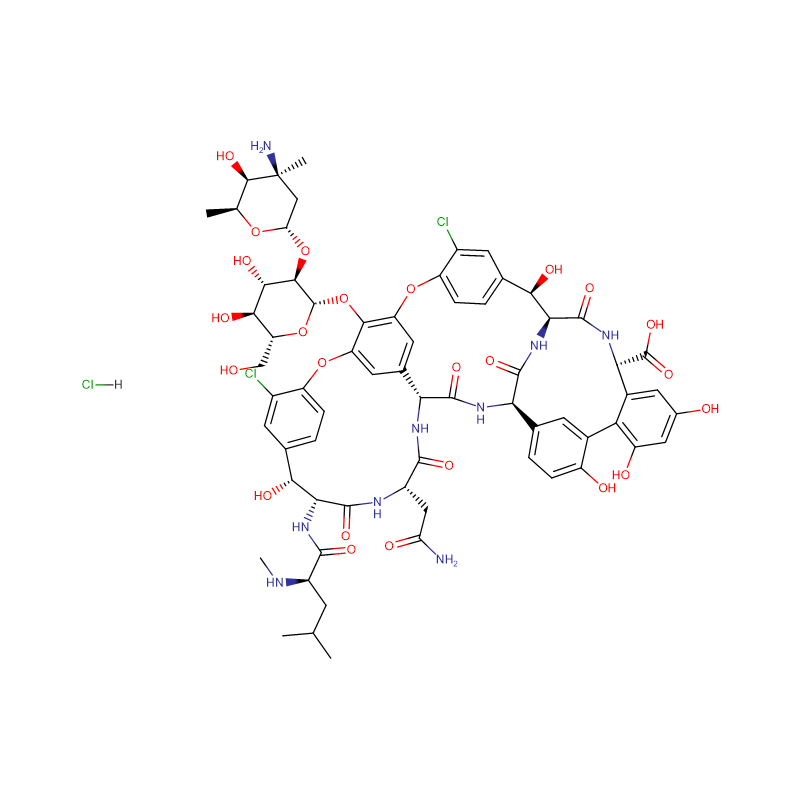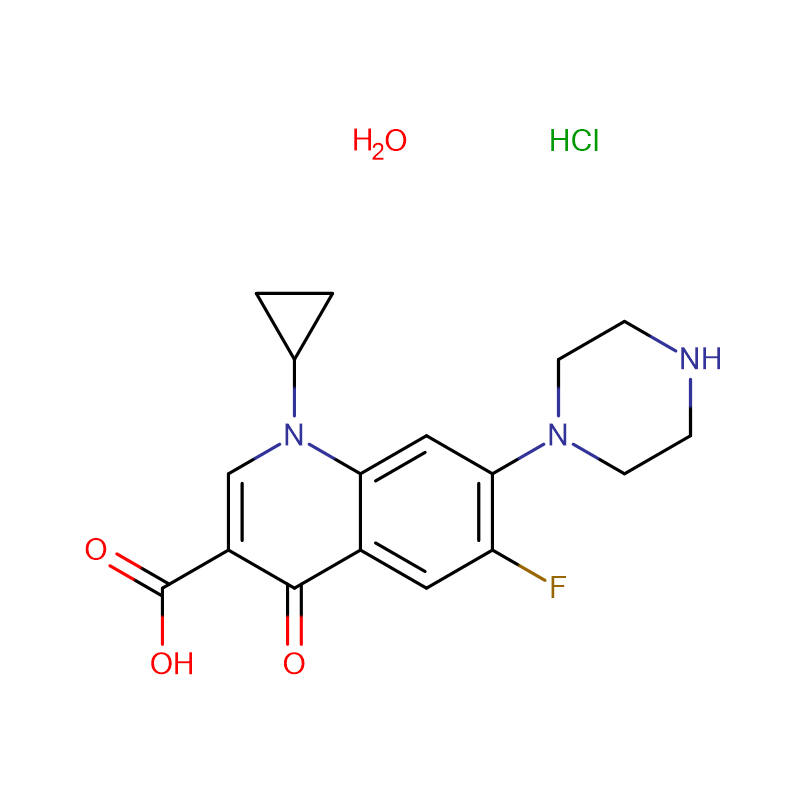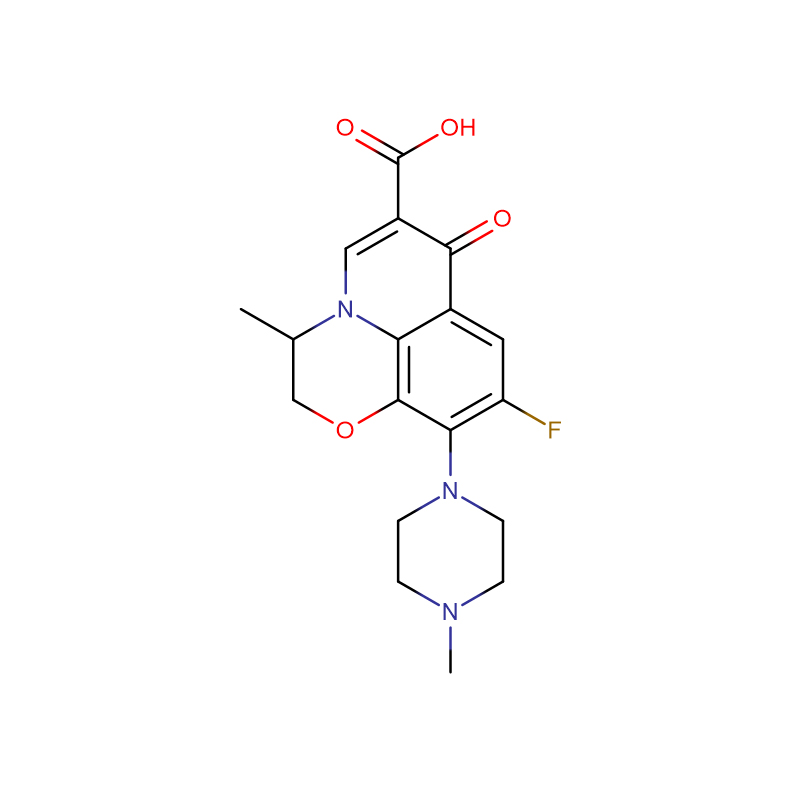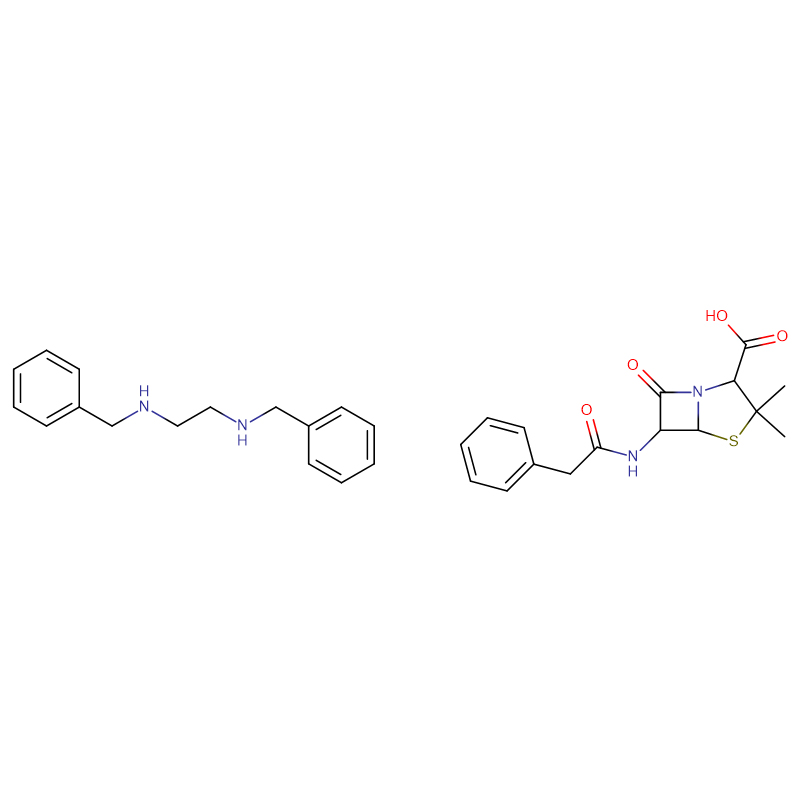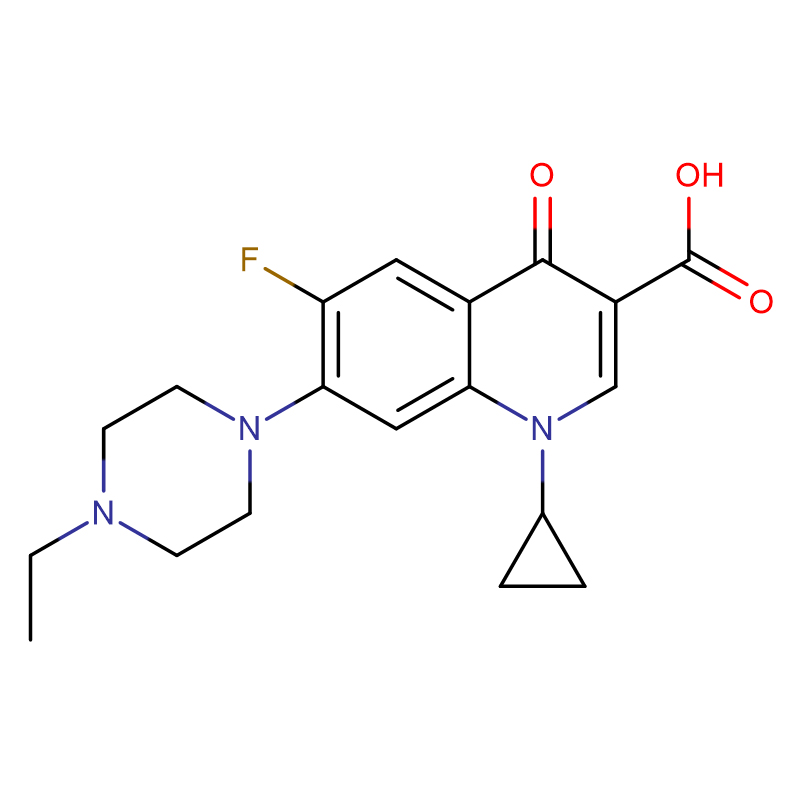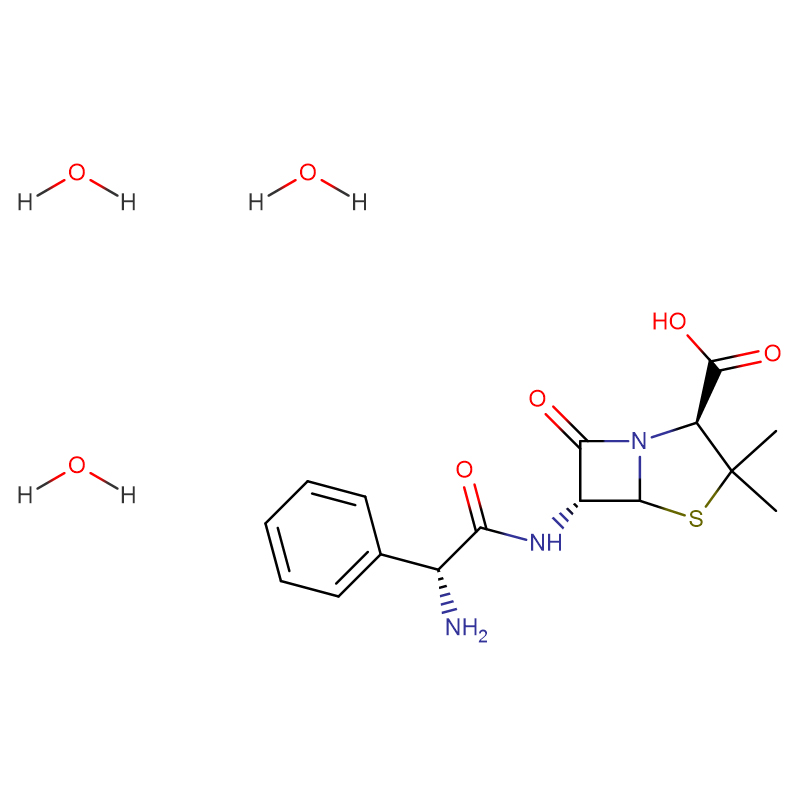Vancomycin hydrochloride Cas: 1404-93-9
| Catalog Number | XD92389 |
| Product Name | Vancomycin hydrochloride |
| CAS | 1404-93-9 |
| Molecular Formula | C66H75Cl2N9O24.HCl |
| Molecular Weight | 1485.72 |
| Storage Details | 2-8°C |
| Harmonized Tariff Code | 29419000 |
Product Specification
| Appearance | White, almost white, or tan to pink powder |
| Assay | 99% min |
| Water | NMT 5.0% |
| Heavy metals | NMT 30ppm |
| pH | 2.5 - 4.5 |
| Bacterial endotoxins | NMT 0.33EU/mg of Vancomycin |
| Clarity of Solution | Clear |
| Vancomycin B | NLT 85% |
| Limit of monodechlorovancomycin | NMT 4.7% |
| Manufacturer | Hubei widely chemical technology Co., Ltd |
Vancomycin hydrochloride is a glycopeptide antibiotic and is the hydrochloride salt of vancomycin. It is white or white-like crystalline powder at room temperature. Its mechanism of action is that it can bind with high affinity to the poly-terminus alanyl-alanine of the precursor peptide located on the cell wall the sensitive bacterial cells, blocking the biosynthesis of the peptide glycan polymer constituting the bacterial cell wall, and thus resulting in the defects of cell wall and further killing bacteria. In addition, it is also possible to change the permeability of the bacterial cell membrane, and selectively inhibit the synthesis of RNA. The characteristic of vancomycin hydrochloride is its strong bactericidal effect against Gram-positive bacteria such as Staphylococcus aureus, Staphylococcus epidermidis, Streptococcus pyogenes, and streptococcus pneumoniae. It also has certain anti-bacteria effects on Streptococci anaerobius, Clostridium difficile, Bacillus anthracis, Actinomycetes, Corynebacterium diphtheria, Neisseria gonorrhoeae, Streptococcus viridans, Streptococcus bovis, and Streptococcus faecalis. However, for most Gram-negative bacteria, Mycobacterium, Rickettsia genus, Chlamydia or fungi, it is invalid. It is clinically applicable to the treatment of infection caused by methicillin-resistant Staphylococcus aureus and other bacteria: sepsis, endocarditis, osteomyelitis, arthritis, burns injury, surgical trauma and other superficial secondary infection, pneumonia, lung abscess, empyema, peritonitis, meningitis, pseudomembranous colitis, and skin and soft tissue infections. It is the primary choice for patients who are allergic to penicillin and suffer from the enterococcal endocarditis and Corynebacterium (class diphtheria sp) endocarditis.


